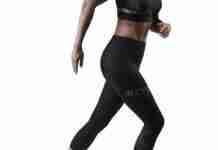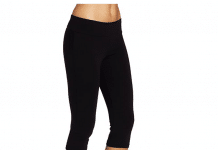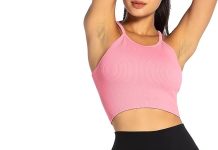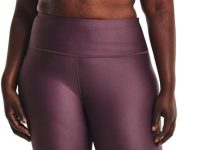Picture this: it’s a chilly winter morning, and you’re standing in front of your closet, trying to decide what to wear. Your options? A trusty pair of jeans or those cozy fleece leggings you recently purchased. It’s a tough call, as both have their own unique qualities. But fear not, dear reader, as we are here to unravel the mystery and determine once and for all, which is warmer – jeans or fleece leggings? Get ready for a head-to-head battle of warmth and comfort that will leave you with no doubts about your winter outfit choices.
Review contents
Overview
When it comes to choosing the right clothing for warmth, it can be difficult to navigate the myriad of options available. In this article, we will explore the warmth provided by two popular choices: jeans and fleece leggings. Both items have their own unique characteristics that contribute to their ability to keep us cozy in colder weather. We will examine the material composition, insulation and heat retention, breathability, and various other factors to help you make an informed decision. Additionally, we will discuss fashion and style, durability, comfort and fit, cost, and environmental impact, as these aspects are also important considerations when selecting the perfect clothing for cold temperatures.
Jeans
Material Composition
Jeans are typically made from denim, a durable and sturdy cotton fabric that is thick enough to provide some insulation. Some jeans may also contain a small percentage of synthetic fibers such as polyester or elastane, which can enhance their stretchability and flexibility.
Insulation and Heat Retention
One of the key factors that determine the warmth of jeans is their ability to trap heat. Denim, with its dense and tightly woven construction, acts as a barrier against the cold air, helping to retain body heat. Consequently, jeans can provide a decent level of warmth in moderately cold temperatures.
Breathability
While jeans excel in heat retention, their breathability may be less superior compared to other fabrics. Denim is not known for its breathability, as the tightly woven fibers limit airflow, potentially causing perspiration and discomfort. However, the breathability of jeans can vary depending on their material composition and the presence of any additional synthetic fibers.
Fleece Leggings
Material Composition
Fleece leggings are made from a soft and fuzzy synthetic fabric called fleece, typically composed of polyester fibers. This material is known for its insulating properties and ability to provide warmth in cold weather.
Insulation and Heat Retention
Fleece leggings are highly regarded for their excellent insulation capabilities. The synthetic fibers in fleece trap air, creating a layer of insulation that helps to retain body heat. This makes them particularly well-suited for colder temperatures or outdoor activities that require added warmth.
Breathability
Despite being highly effective at retaining heat, fleece leggings are generally less breathable than denim. The tightly woven construction of fleece restricts the flow of air, limiting ventilation. This can result in increased perspiration during intense physical activities. However, advancements in fabric technology have led to the development of more breathable fleece leggings, which can offer improved comfort.
Comparing Warmth
Weather Conditions
When comparing the warmth provided by jeans and fleece leggings, it is important to consider the specific weather conditions you will be facing. In extremely cold temperatures, fleece leggings may offer superior warmth and insulation due to their ability to trap air effectively. However, for milder climates, a well-insulated pair of jeans can provide adequate warmth.
Layering Potential
Layering is a popular technique for staying warm in cold weather. Jeans, with their inherent thickness and durability, can be an excellent base layer for additional clothing such as thermal leggings or long underwear. On the other hand, fleece leggings may be better suited for layering as they provide a snug fit and can easily be worn under other garments without adding bulk.
Activity Level
The level of physical activity one engages in can also impact the perceived warmth of clothing. Jeans, with their relatively low breathability and limited flexibility, may be more suitable for lower-intensity activities such as walking or casual outings. Fleece leggings, with their higher breathability and stretchiness, are often favored for more active pursuits such as hiking or winter sports, where moisture-wicking and freedom of movement are crucial.
Fashion and Style
Versatility
Jeans have long been considered a classic and versatile staple in many wardrobes. They can be dressed up or down, making them suitable for a wide range of occasions. Their timeless appeal and ability to effortlessly transition from day to night make them a popular choice among fashion enthusiasts.
Trendiness
While jeans have stood the test of time in the fashion world, fleece leggings have gained popularity in recent years. Their cozy and comfortable aesthetic has become a trendy choice, particularly for those seeking a more casual and relaxed style. Fleece leggings can add a touch of warmth and coziness to any outfit, making them a fashionable and on-trend option.
Aesthetic Appeal
The aesthetic appeal of jeans and fleece leggings varies depending on personal preferences. Jeans are often associated with a more structured and polished look, while fleece leggings provide a softer and more casual appearance. Ultimately, the choice between the two will depend on individual style preferences and the desired overall aesthetic.
Durability
Wear and Tear
Jeans are renowned for their durability and ability to withstand regular wear and tear. The robust nature of denim makes them resistant to abrasions and general rough handling. They can withstand frequent washing and retain their shape and color over time.
Washing and Care
Fleece leggings, on the other hand, require more delicate care to maintain their quality and longevity. The synthetic fibers in fleece can be prone to pilling, shedding, and losing their softness if not washed and dried properly. It is recommended to follow the manufacturer’s instructions for washing and avoid harsh detergents or fabric softeners that can damage the fabric.
Longevity
When it comes to longevity, jeans have a reputation for lasting many years, with some pairs becoming even more comfortable and unique as they age. Fleece leggings, however, may have a shorter lifespan due to their delicate nature and the potential for wear and tear over time. Regular use, washing, and exposure to certain environments can impact their overall longevity.
Comfort and Fit
Ease of Movement
Jeans, while sturdy, may not offer the same level of ease of movement as fleece leggings. The thicker fabric and less stretchy nature of denim can restrict mobility, particularly for activities that require a wider range of motion. Fleece leggings, with their inherent stretch and flexibility, provide greater comfort and freedom of movement.
Stretch and Flexibility
The stretch and flexibility offered by fleece leggings make them a popular choice for those seeking comfort. The synthetic fibers in fleece allow for ample stretch, making them conform to the body’s contours and providing a snug and comfortable fit. This flexibility makes them an ideal choice for lounging, yoga, or other activities that require flexibility and comfort.
Body Contouring
Jeans, with their more rigid fabric, can provide a more structured and flattering fit. Some denim materials are designed to contour to the body, creating a slimming effect and enhancing the natural curves. Fleece leggings, while not offering the same level of body contouring, provide a softer and more relaxed fit that can be equally comfortable and flattering.
Cost
Initial Investment
The cost of jeans and fleece leggings can vary depending on factors such as brand, quality, and design. Jeans are available in a wide price range, from affordable options to high-end designer brands. Fleece leggings, while generally more affordable, can also vary in price based on the manufacturer and the quality of the fabric.
Long-Term Value
When considering the long-term value, jeans often provide a better return on investment due to their durability and longevity. A well-made pair of jeans can last for years without significant signs of wear, making them a cost-effective choice. Fleece leggings, while often cheaper, may need to be replaced more frequently due to wear and tear.
Cost per Wear
To determine the cost per wear, it is important to consider how frequently the jeans or fleece leggings are worn. If jeans are worn regularly and for a long period, their cost per wear decreases over time. Fleece leggings, if worn sparingly or in specific weather conditions, may have a higher cost per wear. It is ultimately a personal calculation based on individual usage patterns.
Environmental Impact
Sustainability
In terms of sustainability, jeans have faced criticism due to their water-intensive manufacturing process and the use of chemical dyes. However, the denim industry has made strides towards sustainability by implementing more eco-friendly practices, such as water recycling and the use of organic cotton. Fleece leggings, made from synthetic fibers, are associated with their own environmental challenges, as the production of polyester can contribute to microplastic pollution.
Material Production
The production of denim fabric requires significant amounts of water, energy, and chemicals. The cotton cultivation process, particularly traditional cotton farming, can have environmental consequences such as soil degradation and pesticide use. Fleece leggings, being made from polyester, are derived from non-renewable resources and require energy-intensive manufacturing processes.
Disposal and Recycling
When it comes to disposal, both jeans and fleece leggings contribute to the global issue of textile waste. However, the natural fibers in denim make it a more suitable candidate for recycling or repurposing. Fleece leggings, being predominantly made from synthetic fibers, are more challenging to recycle and often end up in landfills.
Conclusion
In conclusion, the choice between jeans and fleece leggings ultimately depends on personal preference, specific needs, and the intended use. If warmth is the primary concern, fleece leggings may offer superior insulation and heat retention. However, jeans can provide adequate warmth in milder climates, especially when layered appropriately. Fashion and style preferences, durability, comfort and fit, cost, and environmental impact are all important factors to consider when making a decision. By examining the various aspects of each option, individuals can find the perfect balance between warmth, style, and functionality to suit their individual needs.



































